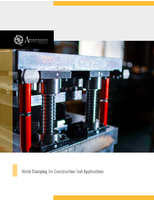EPRI to demonstrate Utility Direct Fast Charger technology.
Press Release Summary:
On Feb 23, 2012, EPRI will demonstrate first prototype 2.4 kV 45 kVA-based, solid-state, DC fast charging technology for electric vehicles, which is expected to achieve overall efficiency of 96-97%. Utility Direct Fast Charger technology will enable rapid charging of plug-in electric vehicles and can also serve as utility-owned distribution asset that can be used for other electricity delivery purposes. Demonstration will be performed using Nissan Leaf and Mitsubishi iMiEV.
Original Press Release:
EPRI Will Demonstrate Utility Direct Fast Charger Technology for Electric Vehicles on February 23 in Knoxville, TN - Executive Summary
Overview
The Electric Power Research Institute (EPRI) will demonstrate the first prototype 2.4kV 45kVA based, solid-state, direct-current (DC) fast charging technology for electric vehicles at its Knoxville, Tennessee laboratory on February 23, 2012. The Utility Direct Fast Charger technology will enable the rapid charging of a plug-in electric vehicle (PEV) and can also serve as a utility-owned distribution asset that can be used for other electricity delivery purposes.
The Utility Direct Fast Charger technology uses fewer components than comparable DC fast charging technologies being designed and used today. Its simple design is expected to result in lower installation costs and to be significantly more efficient than currently available commercial DC fast charging systems. Conventional DC fast charging systems can attain efficiencies in the 90-92% range. When this is combined with the efficiency of a required three-phase supply transformer, the overall efficiency drops to 89-91%. The EPRI Utility Direct Fast Charger technology is expected to achieve an overall system efficiency of 96-97%.
The demonstration in Knoxville will be performed using a Nissan Leaf and a Mitsubishi iMiEV. EPRI will demonstrate the communication capability of this fast charging technology with electric vehicle battery management systems. A user interface and web-based mobile data collection system are also included in the Knoxville demonstration.
The EPRI Utility Direct Fast Charger technology was developed by a team of engineers and scientists from EPRI and Enertronics, with financial and technical support from Tennessee Valley Authority (TVA).
Where this Technology Makes Sense
There are two scenarios where this technology could be applied:
1) Utilities who want to provide fast charging capability directly from their distribution system. This could be especially useful in dense cities where you place fast chargers that aren't hosted by a business.
2) Businesses could install Intelligent Universal Transformer (IUT) technology, described below, as their building transformer and conveniently add fast charging service (and also integrate their onsite solar, energy storage, and building energy management system). This would help in managing the high peak loads of the DC charger and the impact both on the utility and to a business' own cost of service, specifically by reducing demand charges.
DC fast charging technology has the potential to significantly increase the range and versatility of battery electric vehicles, enhancing their commercial appeal. Prior research by EPRI indicates that current electric vehicles have sufficient range for most daily driving.
Previous Research
Based on successful collaborative research, EPRI developed a 2.4KV 10kW working prototype of a DC fast charger for electric vehicle application, using a technology known as Intelligent Universal Transformer (IUT) as the key component. The proof of concept of the fully functional 2.4KV 10KW medium voltage IUT based DC fast charging system was successfully demonstrated in March 2011 at the EPRI laboratory in Knoxville.
This demonstration will confirm the capability of this unit to provide a full vehicle charge. Performance of this new technology will be compared with a commercial 200V 3-Phase DC fast charger. This will be the first of a number of efforts that are planned to take this technology from laboratory prototypes to actual field demonstrations.
The IUT technology replaces both the independent power conversion units as well as the conventional transformer with a single interface system which can be used for fast charging of electric vehicles. The versatility of the IUT provides an intermediate DC bus voltage at the 400-V level that can be directly used for a DC distribution system or for EV fast charging. The medium voltage IUT-DC fast charger has the potential to achieve efficiency higher than 96% in the 10-to-90% operating range, a saving of >6% over the conventional approach. For a dedicated DC fast charger where the DC-AC inverter is not needed, the isolated DC-DC converter output can be directly used for fast charging, avoiding an additional 1.5% energy loss. The elimination of the conventional transformer also allows significant size and weight reduction on cabling and installation. The standard ANSI based 50-kW transformer weighs more than 800 lbs. The entire charging station including the low-voltage based charger will weigh more than 1000 lbs. On the other hand, the weight of the entire EPRI IUT-DC fast charger electronics is less than 150 lbs.
About EPRI
The Electric Power Research Institute, Inc. (EPRI, www.epri.com) conducts research and development relating to the generation, delivery and use of electricity for the benefit of the public. An independent, nonprofit organization, EPRI brings together experts from academia and industry as well as its own scientists and engineers to help address challenges in electricity generation, delivery and use, including health, safety and the environment. EPRI's members represent more than 90 percent of the electricity generated and delivered in the United States, and international participation extends to 40 countries. EPRI's principal offices and laboratories are located in Palo Alto, Calif.; Charlotte, N.C.; Knoxville, Tenn.; and Lenox, Mass.




